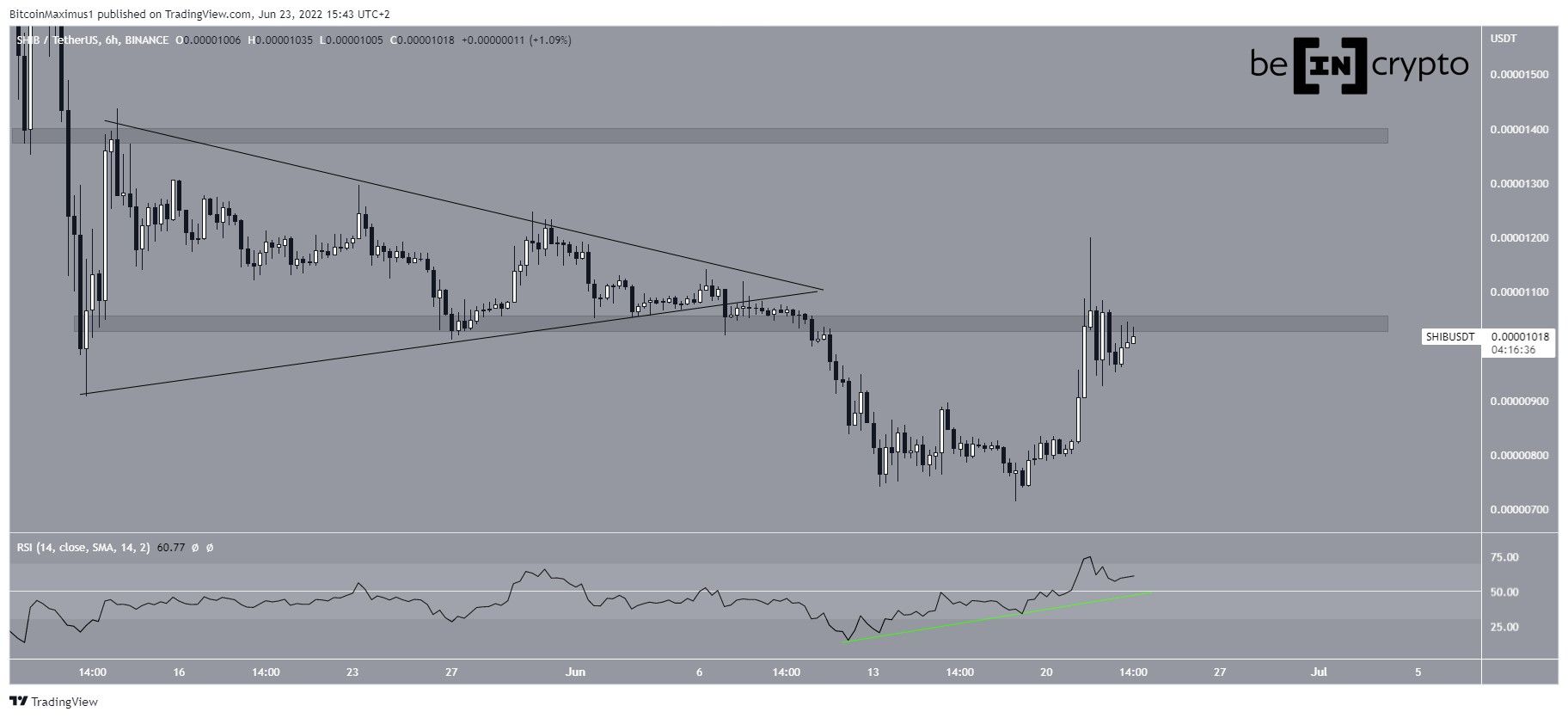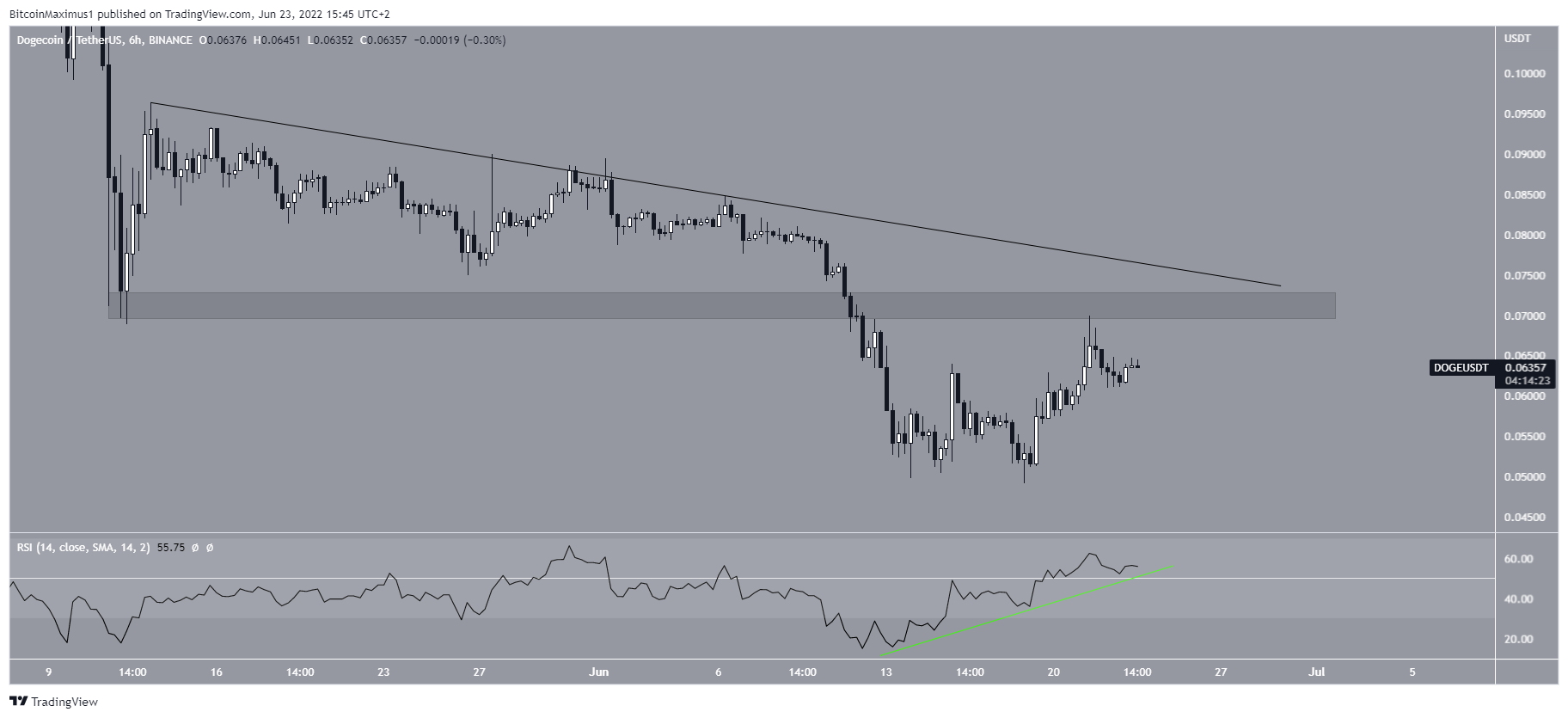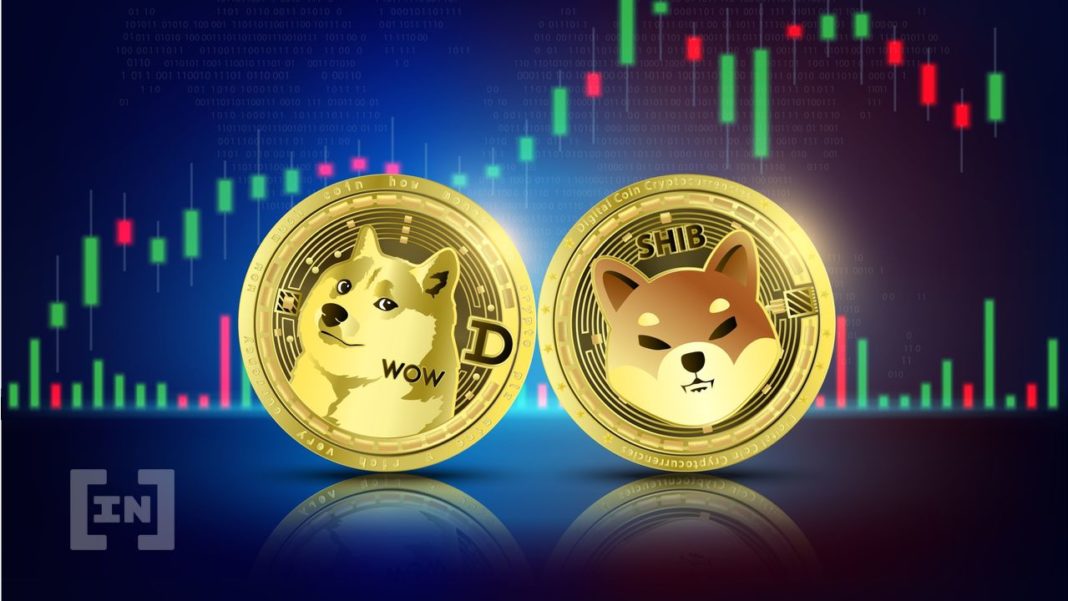SHIBA INU (SHIB) has regained its footing after a breakdown from a symmetrical triangle. On the contrary, Dogecoin (DOGE) has yet to move above its resistance line.
SHIB
On June 6, SHIB broke down from a symmetrical triangle that had previously been in place since May 15. The symmetrical triangle is considered a neutral pattern, meaning that both a breakout and breakdown can occur.
The breakdown also caused a decrease below the $0.000011 area, which had been providing support throughout this same period. Afterward, SHIB resumed its descent until reached a low of $0.000071 on June 18.
The price has been increasing since, in an upward movement that was preceded by a considerable bullish divergence in the RSI (green line). Additionally, the RSI has now moved above 50, in what is also considered a sign of a bullish trend.
As a result of these readings and the price action, a reclaim of the $0.000011 area and a potential increase towards $0.000014 seem likely.
While the price already did increase above the $0.000011 resistance area, it failed to sustain the increase and created a long upper wick.

DOGE
DOGE has been decreasing underneath a descending resistance line since May 12. Unlike SHIB, it has yet to move above this line, despite the ongoing bounce.
Similar to SHIB, the six-hour RSI has generated a significant bullish divergence that led to a move above 50.
However, the price is still trading below the $0.072 area, which now coincides with the aforementioned descending resistance line.
As a result of this confluence of resistance levels, the price action for DOGE is more bearish than that of SHIB. A breakout from both the $0.072 resistance area and descending resistance line would be required for the trend to be considered bullish.

For Be[in]Crypto’s latest bitcoin (BTC) analysis, click here
Disclaimer
All the information contained on our website is published in good faith and for general information purposes only. Any action the reader takes upon the information found on our website is strictly at their own risk.






